Ex-20.3, Mensuration, Class 6, Maths RD Sharma Solutions | RD Sharma Solutions for Class 6 Mathematics PDF Download
Question 1. The following figures are drawn on a squared paper. Count the number of squares enclosed by each figure and find its area, taking the area of each square as 1 cm2.
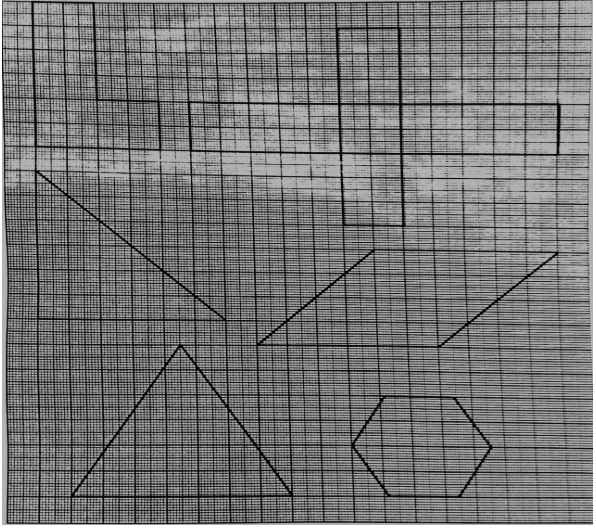
Solution:
(i) There are 16 complete squares in the given shape.
Since, Area of one square = 1 cm2
Therefore, Area of this shape = 16 × 1 = 16 cm2
(ii) There are 36 complete squares in the given shape.
Since, Area of one square = 1 cm2
Therefore, Area of 36 squares = 36 × 1 = 36 cm2
(iii) There are 15 complete and 6 half squares in the given shape.
Since, Area of one square = 1 cm2
Therefore, Area of this shape = (15 + 6 × 12) = 18 cm2
(iv) There are 20 complete and 8 half squares in the given shape.
Since, Area of one square = 1 cm2
Therefore, Area of this shape = (20 + 8 × 12) = 24 cm2
(v) There are 13 complete squares, 8 more than half squares and 7 less than half squares in the given shape.
Area of one square = 1 cm2
Area of this shape = (13 + 8 × 1) = 21 cm2
(vi) There are 8 complete squares, 6 more than half squares and 4 less than half squares in the given shape.
Area of one square = 1 cm2
Area of this shape = (8 + 6 × 1) = 14 cm2
Question 2. On a squared paper, draw (i) a rectangle, (ii) a triangle, (iii) any irregular closed figure, Find approximate area of each by counting the number of squares complete, more than half and exactly half.
Solution: (i) A rectangle: This contains 18 complete squares.
If we assume that the area of one complete square is 1 cm2,
Then the area o this rectangle will be 18 cm2.

(ii) A triangle: This triangle contains 4 complete squares, 6 more than half squares and 6 less than half squares.
If we assume that the area of one complete square is 1 cm2,
Then the area of this shape = (4 + 6 x 1) = 10 cm2
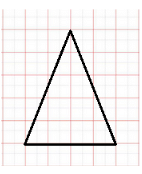
(iii) Any irregular figure: This figure consists of 10 complete squares, 1 exactly half square, 7 more than half squares and 6 less than half squares.
If we assume that the area of one complete square is 1 cm2,
Then the area of this shape = (10 + 1 x12 + 7 x 1) = 17.5 cm2
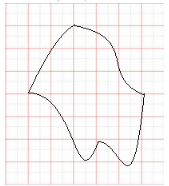
Question 3. Draw any circle on the graph paper, Count the squares and use them to estimate the area the area of the circular region.
Solution:
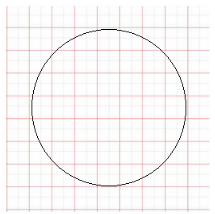
This circle on the squared paper consists of 21 complete squares, 15 more than half squares and 8 less than half squares.
Let us assume that the area of 1 square is 1 cm2.
If we neglect the less than half squares while approximating more than half square as equal to a complete square, we get:
Area of this shape = (21 + 15) = 36 cm2
Question 4. Using tracing paper and centimeter graph paper to compare the areas of the following pairs of figures:
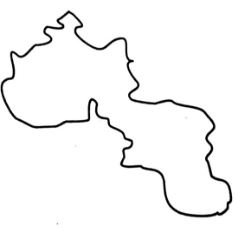
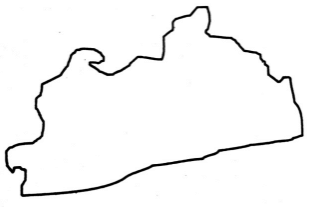
Solution:
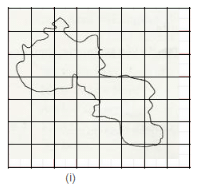

Using tracing paper, we traced both the figures on a graph paper.
This figure contains 4 complete squares, 9 more than half squares and 9 less than half squares. Let us assume that the area of one square is 1 cm2
If we neglect the less than half squares and consider the area of more than half squares as equal to area of complete square, we get:
Area of this shape = (4 + 9) = 13 cm2
This figure contains 8 complete squares, 11 more than half squares and 10 less than half squares.
Let us assume that the area of one square is 1 cm2.
If we neglect the less than half squares and consider the area of more than half squares as equal to area of complete square, we get:
Area of this shape = (8 + 11) = 19 cm2
On comparing the areas of these two shapes, we get that the area of Fig. (ii) is more than that of Fig. (i).
FAQs on Ex-20.3, Mensuration, Class 6, Maths RD Sharma Solutions - RD Sharma Solutions for Class 6 Mathematics
| 1. What is RD Sharma Solutions? |  |
| 2. What is Ex-20.3 in RD Sharma Solutions? |  |
| 3. What is Mensuration? |  |
| 4. How can RD Sharma Solutions help in preparing for the Class 6 Maths exam? |  |
| 5. Are RD Sharma Solutions available in multiple languages? |  |
















